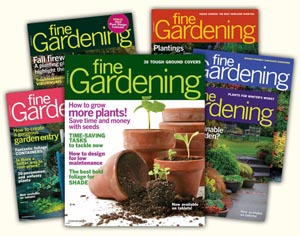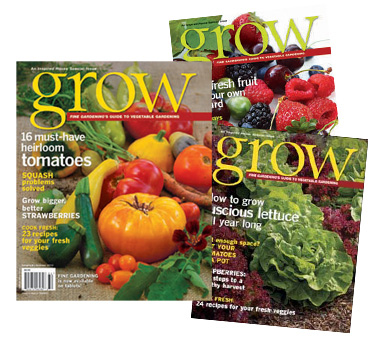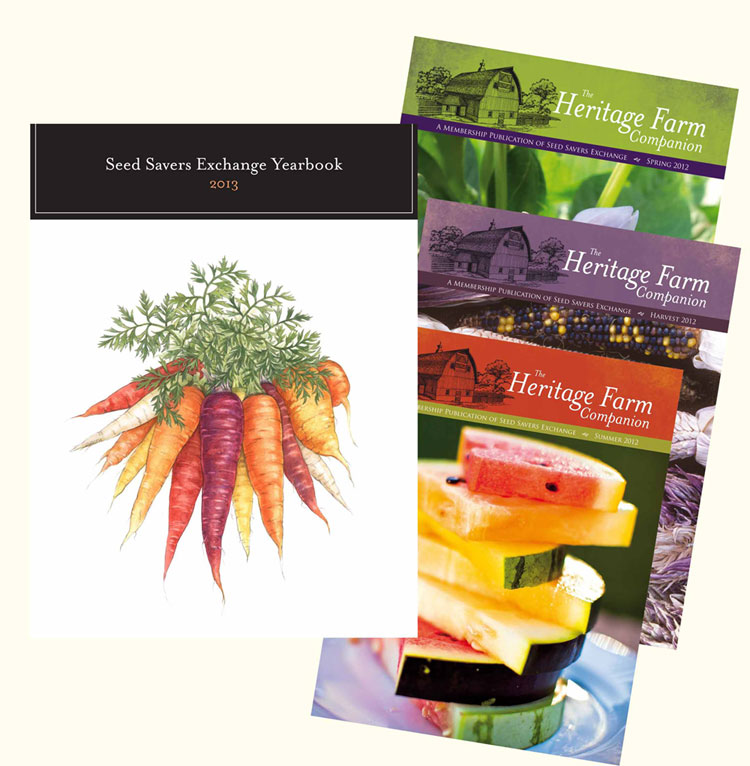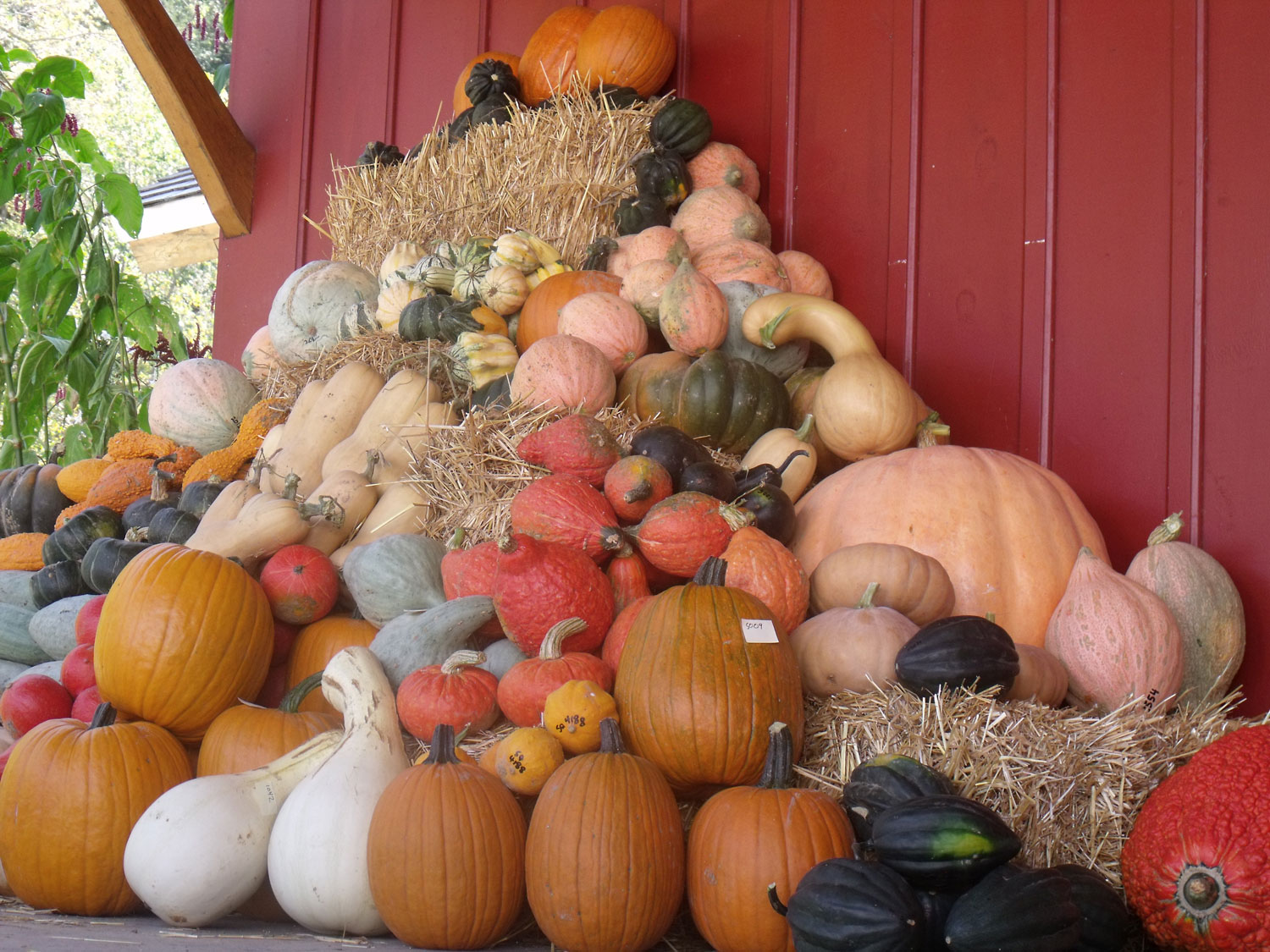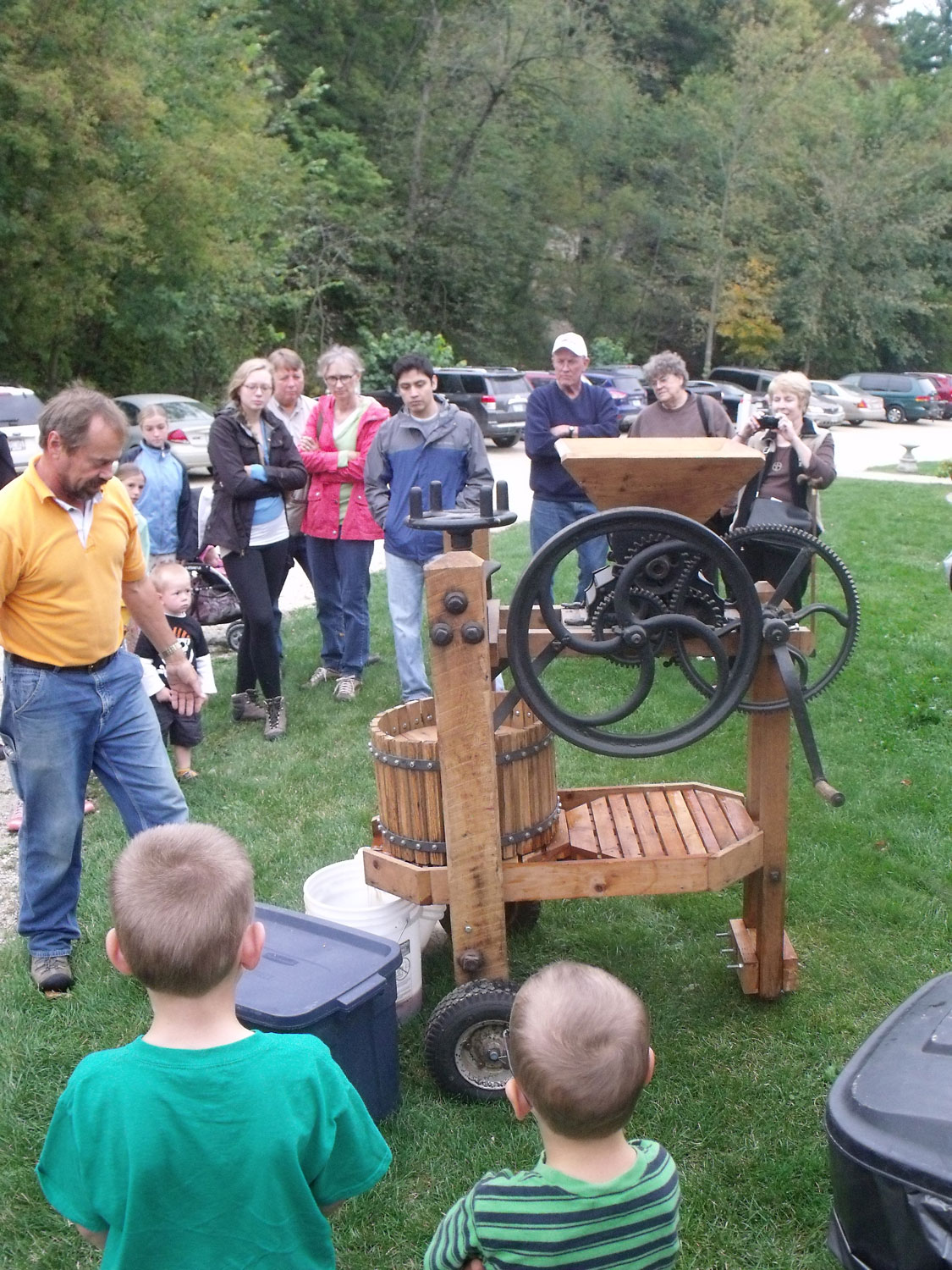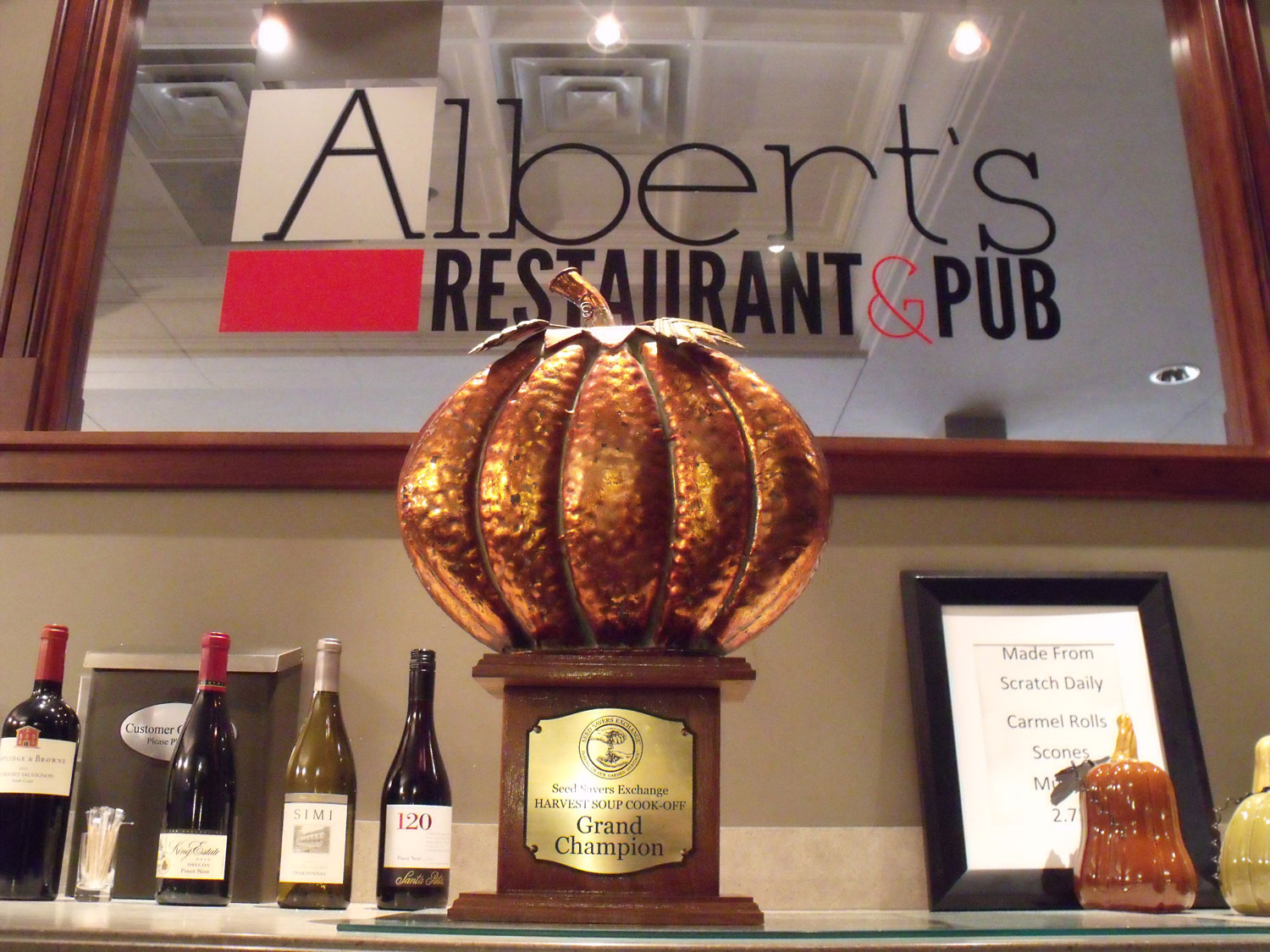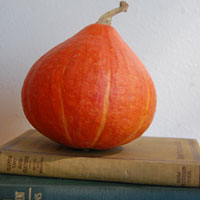Behind the Barn Door
/Grandpa Ott’s morning glories cover the south face of the iconic barn at Heritage Farm, home of Seed Savers Exchange (SSE). But don’t be fooled by the scenery! This barn is much more than a pretty postcard – especially come harvest time.
Behind that wall of sleepy purple blossoms lies one of the busiest seed-saving operations in the country — the first hint of which is the unmistakable sweet aroma of ripe melons drifting from the open double doors. Colorful piles of ripe fruits and veggies sit waiting in buckets while fans blow gently over screens and drying racks full of tiny seeds. The colors, smells and sounds are almost as overwhelming as the neatly printed to-do list on the staff white board.
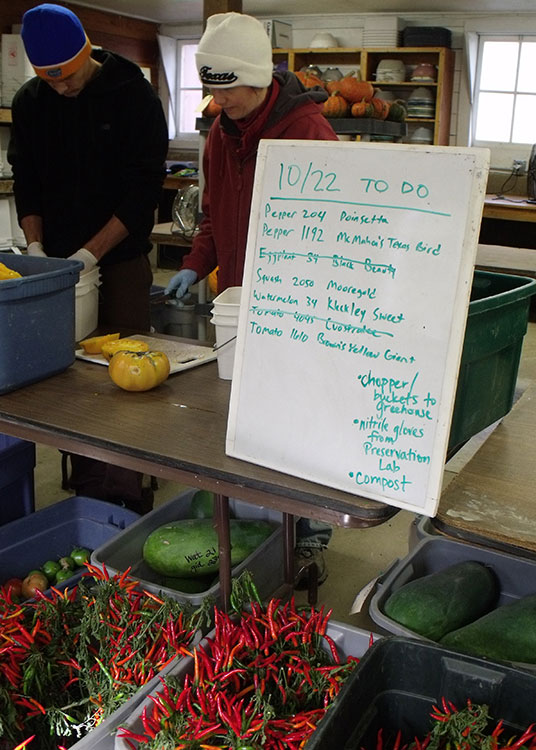 But of course it hasn’t always been like this. SSE’s seed saving operation started in a kitchen, probably much like your own, almost 40 years ago. That’s where we started the seed saving renaissance that is taking place today. If you’re reading this post, it means that you’re part of this movement, and may want to do more.
But of course it hasn’t always been like this. SSE’s seed saving operation started in a kitchen, probably much like your own, almost 40 years ago. That’s where we started the seed saving renaissance that is taking place today. If you’re reading this post, it means that you’re part of this movement, and may want to do more.
You could start by saving your own seeds this season. But even if you don’t, there is something important you can do right now to help the cause of saving biodiversity and our country’s vanishing garden heritage. And you won’t need any special tools or equipment to do it.
By making a year-end gift to Seed Savers Exchange you can help fulfill our non-profit mission to conserve and promote heirloom vegetables, fruits, flowers and herbs. Your generosity will make possible the continuation and expansion of our critical preservation and outreach programs and will allow us to:
- Grow out more than 600 varieties in our collection next year, so that we can evaluate, improve germination and replenish seed stocks
- Provide educational webinars on seed saving, hand pollination and seed harvesting to serve a national audience of backyard gardeners, community gardeners and seed library members
- Facilitate the exchange of thousands of seed varieties among backyard preservationists through the SSE Yearbook and Online Seed Exchange, one of the greatest sources of heirloom varieties in the world
- Maintain thousands of varieties of open-pollinated plant types in our seed bank in keeping with genetic preservation standards
- Document valuable cultural and historical information on varieties
Thank you for your ongoing support and for making a gift to help Seed Savers Exchange do more to preserve our country’s rich agricultural diversity today! By safeguarding the seeds of our garden heritage you will ensure a healthy planet for generations to come.
 PS: The Millennium Seed Bank Partnership estimates that 60,000 to 100,000 plant species today are threatened with extinction. Support us in our efforts to reverse this trend by giving a tax deductible donation today!
PS: The Millennium Seed Bank Partnership estimates that 60,000 to 100,000 plant species today are threatened with extinction. Support us in our efforts to reverse this trend by giving a tax deductible donation today!
___________________________________________________________________
 Seed Savers Exchange is a non-profit organization located in Decorah, Iowa, with a mission to conserve and promote America's culturally diverse but endangered garden and food crop heritage for future generations by collecting, growing, and sharing heirloom seeds and plants.
Seed Savers Exchange is a non-profit organization located in Decorah, Iowa, with a mission to conserve and promote America's culturally diverse but endangered garden and food crop heritage for future generations by collecting, growing, and sharing heirloom seeds and plants.



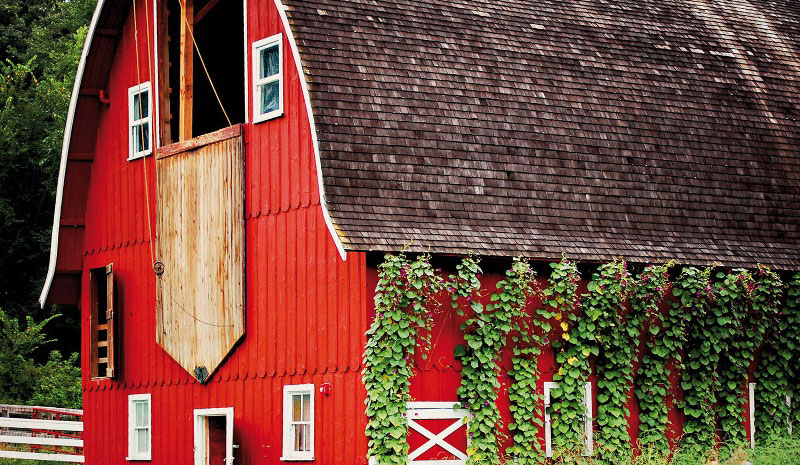



 Late this October, just as the cool weather came to Iowa, I was happy to get away and visit my daughter and her family in the Florida panhandle. My daughter constantly laments the fact that gardening in sand is difficult, and finding good organic produce is challenging and expensive. This year’s Iowa summer was cool, but the fall made up for it by graciously extending the growing season at least three weeks longer than normal. My garden was overflowing with organic heirloom produce as I was preparing for my trip.
Late this October, just as the cool weather came to Iowa, I was happy to get away and visit my daughter and her family in the Florida panhandle. My daughter constantly laments the fact that gardening in sand is difficult, and finding good organic produce is challenging and expensive. This year’s Iowa summer was cool, but the fall made up for it by graciously extending the growing season at least three weeks longer than normal. My garden was overflowing with organic heirloom produce as I was preparing for my trip.



